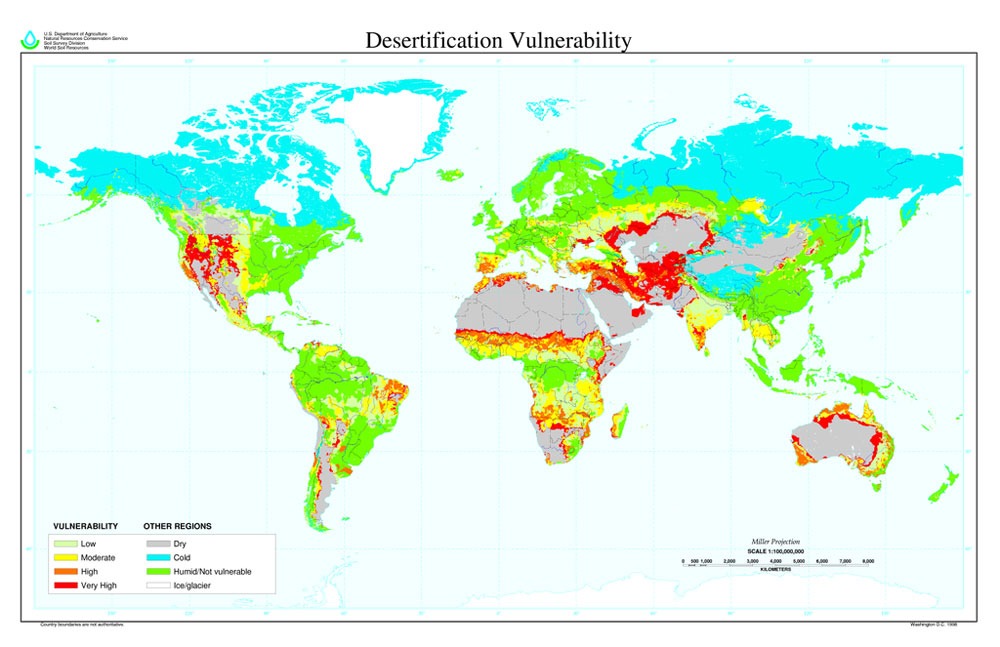
Recently, the United Nations’ Intergovernmental Panel on Climate Change (IPCC) released a new report, titled Climate Change and Land. The report includes a 43-page summary for policymakers, as well as an extensive collection of detailed report chapters and graphs. Some chapters extend as long as 300 pages. In sum, the report provides a very comprehensive look at the ecological challenges facing the 29 percent of our planet that has a land surface. The report adds that roughly 70 percent of land that is not covered by ice is already used by humans in one way or another. The strain on the land, in short, is growing rapidly.
As Robinson Meyer in the Atlantic acknowledges, IPCC reports do not exactly make scintillating copy. In fact, they are boring by design. As Meyer explains, “Somewhat notoriously in climate circles, the final summary of every IPCC report is written by the world’s worst committee process. Over a marathon five days, the lead scientific authors sit at the front of a room and painstakingly read every line of the document to every national delegation that cares to attend. At any time, any delegation can more or less raise any issue with any word, and before the report can be published, every country’s delegation must acquiesce to it in full.”
Boring, however, does not mean unimportant, and Meyer lays out some of the more critical findings of the IPCC research, which involved over 100 authors, hailing from 51 countries.
One theme made clear by the report is that climate change occurs faster on land than in the oceans. As Meyer explains, “For everyone who lives on land, the planet’s dangerously warmed future is already here. Earth’s land has already warmed more than 1.5 degrees Celsius (2.6 degrees Fahrenheit) since the industrial revolution,” compared to 0.87 degrees Celsius (1.5 degrees Fahrenheit) overall. Any rise above that would likely be twice as great on land, too; if global temperatures increase by 1.5°C, that would mean land temperatures would rise to 3°C—or 5.1°F—above pre-industrial norms.
Sign up for our free newsletters
Subscribe to NPQ's newsletters to have our top stories delivered directly to your inbox.
By signing up, you agree to our privacy policy and terms of use, and to receive messages from NPQ and our partners.
A second theme of the report concerns desertification. As Louis Verchot, a scientist at the International Center for Tropical Agriculture and one of those 100-plus report authors, explains, “As the biosphere gets warmer, we increase evaporation. And as we increase evaporation, ecosystems dry out and burn when they normally wouldn’t do that. And when soils get dry due to increased evaporation, we get longer heat waves.” Meyer adds that the “evidence suggests that every year from 1961 to 2013, an additional one percent of the world’s drylands slipped into drought.”
A third important theme is that land cannot multitask. Doreen Stabinsky, an environmental politics professor at College of the Atlantic in Maine, puts it this way to Meyer: “Land can’t, at the same time, feed people, and grow trees to be burned for bioenergy, and store carbon.” So, solutions to global warming, like planting trees, can help, but it requires shifting the use of land currently used for something else to plant trees. As Meyer notes, a recent high-profile study suggested that if you planted 2.2 billion acres of the world with trees, you could absorb two thirds of carbon emissions. But, as Meyer points out, “there’s a problem with that. Those 2.2 billion acres—an area roughly the size of the continental United States—are already in use. They comprise, in large part, the planet’s most productive farmland!” The current UN estimate for population by 2050 is 9.8 billion, up from 7.6 billion today, so there are a lot of mouths to feed.
George Monbiot in the Guardian, however, suggests there may be a path that would allow for the use of land for agricultural production to decline. To do so would require a change in diet away from red meat and toward more plant-based fare. Should that occur, then grazing land could revert to natural ecosystems, “and the land currently used to grow feed for livestock [could instead be] used for grains, beans, fruit, nuts, and vegetables for humans,” which could both dramatically reduce carbon emissions, as well as reduce the amount of farmland required for human food production.
Meyer observes the scale of the challenge: “Climate change requires us to alter the biogeochemical organism that we call the global economy on the fly, in our lifetimes. Such a task should command most of the time and attention of every economist, agriculturalist, investor, executive, and politician—anyone who fancies themselves a leader in the physical workings of the economy, or whatever we call it. It is our shame, and theirs, that they don’t.”—Steve Dubb













